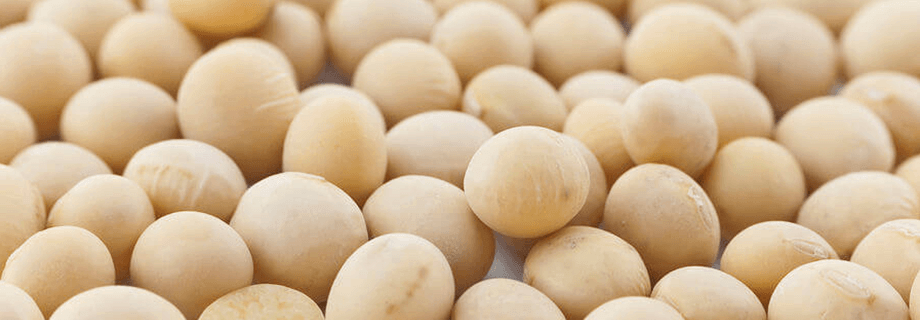Using Dry Extruded Whole Soybeans (“extruded full-fat”) in Formulations

For several decades, Insta-Pro International has been well known around the world for dry extrusion, which we invented in the 1960’s. You can read more about it here. Dry extrusion was invented to process soybeans, and over the years, this process has been well researched. The advantages of this technique are the following:
- Thorough plant cell wall rupture, providing much improved access to nutrients
- Deactivation of naturally-present antinutritional factors, which hinder animal performance
- Improved nutrient digestibilities as measured by animal studies
- A high-temperature, short-time process that is easily controlled and does not destroy proteins
- Partial dehydration, resulting in less moisture content and a more concentrated form of nutrients
- A single ingredient bringing both highly-digestible amino acids and a high energy content to consume a sizable portion of many formulations
All of these are critically important; however, it is this last point that often goes unappreciated. Keep in mind that what we’ve done here is, following cleaning and cracking, high-shear dry extrude soybeans, and then cool them. All of the oil remains in the meal to provide energy for the animals.
This is powerful because this is a process that we can easily control. This means fewer surprises when formulations include this ingredient.
I recently sent some dry extruded whole soybeans to the laboratory for determination of amino acid digestibilities and metabolizable energy using live birds. Nutritionists and formulators rely on these values when putting diets together. Values for samples of commodity, solvent-extracted soybean meal, which were recently analyzed, are shown for comparison.
| Digestible AA supply and % digestibility | Dry extruded whole soybeans | Solvent-extracted soybean meal |
| Digestible lysine | 2.16 (84.8%) | 2.68 (87.5%) |
| Digestible methionine | 0.47 (90.4%) | 0.62 (90.6%) |
| Digestible cysteine | 0.43 (82.7%) | 0.50 (77.8%) |
| Digestible threonine | 1.29 (87.7%) | 1.61 (85.9%) |
| True metabolizable energy, nitrogen corrected (kcal/kg DM) | 4109 | 2796 |
| Dry matter (%) | 96.1 | 89.1 |
We can see a few things right away. Dry extruded whole soybeans, with all of the oil still in the meal, have a lower total protein content. Despite having a slightly higher overall amino acid digestibility value (all averaged together), the amino acid supply from dry extruded whole soybeans will always be lower than other partially- or fully-deoiled soy meals, like solvent-extracted.
The major difference then shows up when looking at energy values. Energy is required to maximize production, and is abundant in dry extruded soybeans from all of the oil remaining in the meal – not to mention from effects due to the process itself.
Impact to Diet Formulations
I put together some estimations for a colleague in another part of the world regarding how to think about using dry extruded whole soy in an example broiler formulation.
Dry extruded soy meal adds $51 per metric ton to a formulation over the cost of solvent-extracted soybean meal. But, you have to look at the entire formulation, and when this is done, it’s actually cheaper per metric ton (other expensive ingredients can be removed) to have a complete diet based on dry extruded whole soybeans – in this case, every situation is different.
The main challenge with using dry extruded whole soy is the high available energy level, which can limit its use before adequate amino acids (in protein) are supplied. In a future blog, I will discuss how oil removal with an Insta-Pro press, which results in dry extruded/pressed (ExPress®) soy meal, allows for a greater inclusion level of soy meal in many formulations, and the generation of high-value, crude soy oil (non-solvent), which is another product to sell. If you are interested in learning more, send us a message.

